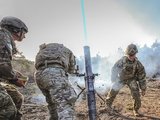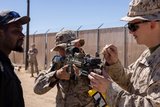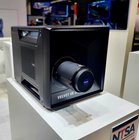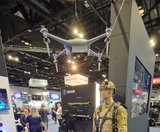Cubic tailors mortar simulator for the US Army
The company’s mortar trainer received improvements based on soldier’s feedback.
The US Army’s 82nd Airborne Division Soldiers, along with the Airborne and Special Operations Test Directorate (ABNSOTD), has completed static line airborne insertion testing on the Family of Weapons Sights-Individual (FWS-I), the army announced on 17 July.
The FWS-I programme aims to modernise direct fire optics for small arms platforms including medium and heavy machine gun systems. The programme will provide soldiers with thermal enablers/sights for the individual, crew served and sniper weapons.
The programme will provide soldiers the capability to see deep into the battlefield, increase surveillance and target acquisition range and penetrate day or night obscurants.
During testing, soldiers from the 5th Squadron, 73rd Calvary Regiment, 3rd Brigade Combat Team conducted nearly 50 static line airborne test trials with the FWS-I, jumping two separate rigging configurations. After the airborne operations, the soldiers performed function checks on the systems and confirmed bore sighting was maintained.
The aircraft used as the test's jump platform was the CASA-212 Aviocar turboprop-powered medium aircraft. During post drop operations, jumpers assembled for accountability and to ensure all sights were fully mission capable by performing a system functions check following the procedures learned during new equipment training.
The sight mated to the host weapon was then evaluated for shock induced bore sight reticle movement which would signal a potential loss of the weapon zero.

The company’s mortar trainer received improvements based on soldier’s feedback.

The company will operate in two new locations in the coming years to better support US services.

This type of tool provides more realistic training easing the incorporation of new scenarios that accurately represent the threats of the battlefield.

The Engineering Corps has been conducting individual instruction using FLAIM Systems’ Sweeper and should start collective deployments in 2025.

The next-generation platform is motion-compatible and can be used in OTW and NVG applications.

The system can be used to prepare soldiers for both drone offensive operations and CUAS missions.